It’s another good week, as I got to watch another band new episode of DOCTOR WHO this afternoon, which is always a joy. I also got to excavate a bunch more documents related to the first ten years of Superman, to more thoroughly fill out the master timeline I’ve ben crafting—it’s 72 pages in length at the moment—and read firsthand just how insane Superman creator Jerry Siegel could come across, even if he had some legitimate gripes. But maybe the best thing I’ve run across this past week is this video. It’s an absolutely brilliant shot-for-shot evocation of the title sequence to Neon Genesis Evangelion only using the characters from King of the Hill. I’d seen an earlier version some years previous, but this version is utterly spot-on. I suspect that it’ll be amusing even to folks who are only somewhat familiar with either Evangelion or King of the Hill, but if you know either, it’s a genuine treat. Go ahead, don’t let me stop you.
Right-o, let’s dive right in to correspondence then!
Chris Sutcliffe
In response to one of your answers, about telling people to change art that doesn't work, and then doing it: does anyone ever say no?
I don't mean like a petulant child, but is there scope for artists or writers to argue their case against changes you or other editors want made? Especially people who you have a trusted relationship with?
If so, are there any examples of times where they fought back and ultimately proved you wrong, or where you relented and ultimately wished you hadn't?
I always try to stay open to any well-reasoned argument, Chris, so it can be possible to convince me that what I think is a deficit in the artwork isn’t actually one (or won’t be by the time the page is completed.) And sure, there have been instances when somebody has gotten me to go along with something, and it has both worked out or it hasn’t. I don’t really have a specific example in mind just this moment, though—but it’s happened both ways over the years. That said, if I’m not convinced and the artist still doesn’t want to make the change that I’m asking for, then the artist in question is likely going to have to start looking for a new assignment.
Zach Rabiroff
Almost every creator I've interviewed has talked about a stage in their fandom when they evolved from following particular characters or universes to following favorite artists or writers (or, in the case of an elite few, favorite editors). Do you recall when this happened for you, and who those first select creators were?
I think this is a natural and gradual thing that happens over the years, Zach, especially as you move from being a kid into being a young teen—your tastes change and your awareness of the stories as works fashioned by human hands grows. For me, the first writer I became aware of was Cary Bates, because he was a guest-star in an early issue of THE FLASH that I read. But moving into the 1980s, I definitely started to become more aware of creators. Among those whose work I tended to follow were George Perez, Marv Wolfman, Frank Miller (though not everything—I skipped RONIN, too pricey for me), John Byrne (again, not everything, though), Dave Sim, and Alan Moore. And I was more likely to pick up, say, new DC titles helmed by talent that had migrated over from Marvel such as Roy Thomas or Gene Colan. Oh, and sorry for fouling up the spelling of your last name so consistently, that’s entirely on me.
Evan “Cool Guy”
It seems like recently there has been a trend at Marvel of creators returning to characters they wrote years ago and writing new stories set at the time they originally wrote them. There's the new Daredevil Black Armor, along with Magneto, Maestro, Secret Wars etc. Is this a specific strategy of sorts, or what went into this decision?
It was a concept that developed over time, Evan, one that seemed to allow it for classic creators of the past to more effortlessly step back to characters that they had worked on back in the day without needing to get caught up on literal decades of stories that had happened between then and now, nor to reflect those stories. I’m reasonably certain that the first recent project we did of this sort was SYMBIOTE SPIDER-MAN as written by Peter David, and it did quite well for us—so much so that we produced at least one sequel. From there, the process simply expanded outward, as different talents became available.
Thom
Here’s my question: when the numbers dictate it’s time to wrap a series that isn’t quite stand-alone, does that leave editorial folks in a lurch, moving around narrative beats in other series, or rewriting future plans? Or do you hedge your bets beforehand, making plans that rely on supporting books no more than five issues out?
In most cases, Thom, it does. It certainly did with AVENGERS INC, which we expected to go on for closer to twice that length. Fortunately, Al Ewing is a very clever man, and was able to tie up most of the plotlines and mysteries that he’d been setting up in the space remaining to us. It’s going to be a lot more whip-fast and compressed than it was intended to be, but that’s the luck of the draw, I’m afraid. We didn’t want to leave readers hanging—although that can happen when titles need to stop mid-stream. And back in the day, it happened quite often, with series such as NOVA eventually getting wrapped up in FANTASTIC FOUR and ROM.
Jeff Ryan
Regarding a title like Savage Avengers, or Hickman’s New Avengers: The former is a Conan team-up book, the latter is an Illuminati comic. Do you think they’d have sold equally well if they weren’t called [ADJECTIVE] AVENGERS?” And does it matter as much as putting out a good comic? Would they have sold as well as CONAN TEAM-UP or ILLUMINATI?
Well, Jeff, I can remember having to argue to call Jonathan Hickman’s book NEW AVENGERS in the first place, as certain folks felt that the title was misplaced there. And the reason that I fought so hard to keep it comes down to the sales strength that it had built up over the years, which I figured would make it easier to maintain the series for as long as it would need to be around, almost three years in all. So yes, a book titled ADJECTIVE AVENGERS is likely to sell better than a book called ILLUMINATI. I’m never looking to fool anybody, I want to have a logo on the cover that reflects the contents of the series I’m putting out. but I’d be a fool not to angle that as much as possible as what is the most likely to bring in an audience and allow the series to survive.
Steve Replogle
I'd like to ask you about Steve Ditko. I know he was phasing out of mainstream comics work at about the time you started with Marvel, but did you have any personal or professional contact with him? Did you ever hear about him from Roger Stern or Tom DeFalco, who worked with him on Speedball? Or anyone who worked with him on any other Marvel properties?
Steve Ditko was around on a semi-regular basis back in the early 1990s when he was doing work up at Marvel, Steve, but I don’t really have any stories about him that I can tell you, nor did I ever work with him directly. He turned me down every time I called him up with a potential project, which wasn’t all that often in the first place. But he wasn’t mysterious, just not especially interested in the concerns of mainstream comics and their makers at that point in his life and career.
Manqueman
question about the art: Was it drawn old school -- on paper -- and if so, did it go straight to coloring without being inked? Looked kind of rough rendering-wise.
Anyway, my real question is: Is their a system to who designs and layout covers and how the artists are selected? Whether or not there's a single way, how does that sausage get made? Too: A lot of covers look like they would work better with the image flopped. That's a me thing, right?
The artwork on AVENGERS INC was penciled and inked on paper by Leonard Kirk, Manqueman, so what you’re seeing is just the style of it. In terms of covers, the artists are selected by the editors in conjunction with Marvel’s talent management team and the editor in chief. Same way that the talent on the interiors is put together, really. Sketches for covers get routed to the EIC and the two Executive Editors for comment or approval, and then the finished pieces are executed. And yes, it may just be your aesthetic that says that many of the images would work better flopped—which doesn’t mean that you’re wrong, at least in certain situations. Typically, the editor will provide the artist with some manner of image prompt—I’ve been known to do crappy little doodle-sketches in certain instances to get the basic idea across. And that image prompt usually is arrived at in conjunction with the writer, who’ll have the best idea of what’s going to be in the issue, especially if the script hasn’t been written yet.
Roadshow
What's your ideal setting for watching this beloved show? Do you gather the family around and watch along together, or is it more of a silence-and-a-single-malt at your side kinda time?
We’re talking about DOCTOR WHO here, just to be clear. And typically, it’s myself and my wife sitting down to watch it whenever a new episode becomes available. My kids have never had any particular interest in the show—though they do know that it can be hazardous to interrupt when it’s on. My wife started watching with some regularity probably around the start of the Matt Smith era, though she’d seen it earlier on a more haphazard schedule. She was also far better at flying the TARDIS than I was.
CG
Just wanted to get your perspective on solo characters. We know there have been some good runs that last for a longer period than most but for the last few years characters have to get reboot or refreshed to get the reader interest back.
I think there’s a certain sales goal that is a requirement but most runs have had that 5-6 issues for TPB policy in recent years.
Will mini series be more prevalent in the future? We currently have some which I think is great because it can focus on other characters that typically don’t get the focus they deserve but it would be awesome if more maxi series were approved as well.
There are solo characters that get new solos consistently and others that do not; is that typically editorial or upper managements call?
And do you see less interest in super heroes that are patriotic? I think the spy, super soidier, and powers aspect of them is always intriguing but with individuals like Captain America and Captain Britain is it harder for writers to find an in with those types of characters? And how important is writer/artist combo, interviews, and promo art for solo runs and are certain characters only given a certain budget?
Lots of questions here, CG! So let me try to take them one at a time:
I don’t think solo characters are really any harder to get to run for any length of time than team concepts.
Not entirely sure what you mean by this. Yes, we tend to do collections in 5-6 issue increments, but those don’t require the stories to absolutely be 5-6 issues in length. You can fit shorter stories into a 5-6 issue collection as well.
Limited series are already more prevalent than they’ve been in the past. But today, ongoing series doesn’t quite mean what it once did, when you could feel guaranteed to get a run of a decent length out of it. See AVENGERS INC. It’s a tough marketplace out there, so it all comes down to connecting with an audience.
There are certain characters who are considered perennials; which is to say, they are more likely to sell with some certainty than more obscure characters. And so they tend to get solo series more often, if not consistently.
I don’t think there’s any particular drag on patriotic-themed characters, no. And the creative team and story concept are incredibly important, of course—pretty much the whole ballgame there. promotion always helps, of course, but it won’t fix a book that isn’t connecting. And individual projects will have a certain budget but that isn’t down to just character.
Montana Mott
Years ago, I told a white lie to a relative that I enjoyed their holiday Chex Mix, and every year without fail they bring me more of their Chex Mix when we see each other this time of year. I'm too far in to turn back now, so I eat the unsavory Chex Mix and suffer the consequences of my past dishonesty :) Hopefully your wife's recipe will taste better.
Trust me, I’d put her recipe up against all comers, presuming it’s made correctly. It’s perniciously delicious stuff.
Caleb Wong
Before you start to work as X-editor, what was your best advice to the fans who cling to some content for the B-listed heroes and what advice do you hope for the next editor who takes over your previous editor position?
I think the best advice for everybody, Caleb, is to wait and see what develops. Obviously, with a cast as large as the X-Men, you can’t possibly field everybody at all time, it’s simply not practical. But that doesn’t mean that the players who will be featured are predetermined. As for my successor on AVENGERS, I don’t have any real worries there, because the incoming editor is Wil Moss, and I have every confidence in his ability and skill. He’s going to do a bunch of stuff that I never would, and that’s exactly what he ought to be doing. His AVENGERS will be just as different from mine as my X-MEN will be from Jordan White’s.
Dewey
I had a question about characters getting a Bold New Direction. As an example, I've never been too interested in the Hulk, but sometimes a radical take on the character will get me. The Jenkins/Garney/Romita, Jr. run in the 2000s, the Immortal era, and the current run (the best Hellboy comic on the market) are all books I've really enjoyed. But I have to assume for every reader like me, there's a long-time Hulk reader put off by a big change in status quo. I was wondering what your philosophy is for taking a big swing like that. I think the current volume of FF counts as one of these, a pretty radical (Very fun) spin on the series. How do you decide if an idea can thread the needle between appealing to existing fans and attract new ones? Is it even possible to think of it in those terms?
Um, if it’s good? That’s really the biggest criteria, Dewey. As an editor, you have to have an instinct about what might work on a given property at a given moment in time, and then be able to find the creators who can hit to that sweet spot. I don’t think that any of it is intrinsically daring (except when it is) so much as it is keeping the characters alive and lively and interesting across the long haul. There are always going to be people who like what you’re doing and people who don’t. The trick is to wind up with more of the first in total. And to understand that nothing is solid-state in this field, and what works today may not be what works a year or two or three from now.
Ray Cornwall
I know it's not a Marvel book, but didn't that sales pattern happen with The Walking Dead?
Not really, Ray. It was never on the chopping block, it just built up a much larger audience over time. probably INVINCIBLE is closer—but even there, it wasn’t in any worse trouble than the other hero books that were launched alongside it, such as FIREBREATHER, and it found its audience before the end would have come. All of that is by Image standard, of course, which will be different from Marvel’s or other companies’.
Behind the Curtain
.
Hey, we’re finally finishing up the last little bit of that booklet of cover concepts that I made up as a thought-starter for our staff and artists in terms of coming up with cover images.
Joe Quesada was still Marvel’s Chief Creative Officer when I made this book up, plus he’s one of the strongest cover artists in the field. So it only made sense to feature a few pages of Joe’s covers to show off his graphic approach to image and composition and dynamics.
The last couple of pages in this section were dedicated to tropes of years past. Back in the 1970s, it seemed as though every cover showed the hero on the ropes and saying or musing to himself that he couldn’t overcome whatever situation he was up against. I don’t know why people of the day felt that defeatist covers prompted sales—maybe the idea was to make the good guy feel like an underdog. But it happened quite a lot.
Along the same lines, Marvel heroes of the period were quick to proclaim either that they were finished or that they’d had it—a polite way of indicating death without saying death, which might have been off-putting to some more conservative parents.
And a bit that was specific to THOR covers for some reason: the God of Thunder proclaiming that all of his power can save either himself or his friends. Four examples right here. Crazy!
This miscellaneous section is made up of additional covers that I’d grabbed up but didn’t have enough of to make up an additional four-up page in one of the earlier sections. So these are all strong cover images, but they run the gamut of all of the different approaches we discussed previously.
And at last, that is a wrap for covers! Something entirely new next time!
Pimp My Wednesday
Hey, it’s December! Year’s already almost over, how insane is that? It’s been both a long time coming while it also feels like just yesterday. Anyway, here are some new comic books to help while away the time.
AVENGERS #8 by Jed MacKay and C.F. Villa contains the second part of our Twilight Dreaming storyline, which as this cover shows, features the return of the Twilight Council, first seen in the pages of TIMELESS last December.
Not to be outdone, Alex Ross paints the Syndicate from the pages of AMAZING SPIDER-MAN on the cover to FANTASTIC FOUR #14. It’s been a year, and now the Baxter Building and the surrounding territory is meant to rematerialize in the center of Manhattan. So the FF are on site for this event, but then… Ryan North and Ivan Fiorelli have the answers.
And in AVENGERS UNITED, Derek Landy and Phillip Levy detail the Avengers’ desperate struggle against the Fear Teacher from the far-off moon of Yun-To. We aren’t even halfway through this massive story yet!
A Comic Book On Sale 55 Years Ago Today, December 3, 1968
By 1968, the brief sales spike on super hero titles driven by the enormous momentary popularity of the BATMAN live action television program had run its course, and the Silver Age was gasping towards its finish line. Titles that had seemingly been trucking along just fine were suddenly plagued by sales dropping off, causing them to either radically alter the contents of their series in an attempt to lure readers back, or else they ran aground and vanished from sight. In the case of two of these once-proud powerhouses, something different was attempted. THE ATOM and HAWKMAN saw their individual series merged into a single split title, helpfully called ATOM HAWKMAN. The hope, I’d imagine, was that the fans of both characters would be enough in tandem to keep such a combined title afloat. They weren’t. But they did give the Mighty Mite and the Winged Wonder a few more months in the spotlight before the two of them would be relegated to a career as back-up features and back-benchers among the Justice League of America. This wasn’t the first issue of ATOM HAWKMAN, but it was the first one that I ever saw, and I was fascinated by it. The series alternated between issues like this one, where it was a TALES OF SUSPENSE style split book where each character had his own story, and issues in which the Atom and Hawkman would join forces for a combined adventure. Editor Julie Schwartz had months earlier established a friendship between these two heroes in an attempt to duplicate the sales-buoying connection between the Flash and Green Lantern. Again, though, magic just didn’t strike twice. Behind that very cool Joe Kubert cover, this issue saw the Atom contending with an amnesiac bank robber while Hawkman puzzled out the strange abilities suddenly possessed by an acquaintance of his. Neither story was especially memorable, which was the real problem here, I expect.
A Comic I Worked On That Came Out On This Date
It’s mostly been just luck of the draw, but despite having worked closely with him for a decade-plus, I haven’t had an opportunity to talk about Brian Bendis all that much. Well, this Annual should help to remedy that. It was released on December 3, 2009 right in the middle of Brian’s tenure as the writer on (NEW) AVENGERS. And it was beautifully illustrated by Chris Bachalo, a terrific artist whose sense of page and panel composition could occasionally be described as challenging. My memory of this Annual is that it was a really good one-off on the part of both creators—Brian in particular was at his best during the year and a half when DARK AVENGERS was the main AVENGERS title. this all came in the wake of SECRET INVASION, after Norman Osborn took the shot that killed the Skrull Queen Veranke and he was able to parlay his notoriety from that action into being named the head of the SHIELD replacement organization HAMMER. Norman was consequently everywhere, a thorn in the sides of all of the major Marvel heroes, not just his web-clad regular nemesis. It built him up in a big way. And following suit, Norman assembled his own team of Avengers who took on the identities and costumes of several of the heroes in a wrinkle on the Thunderbolts idea. One character that had been kicking around for a while without a home was Grant Morrison and J. G. Jones’ creation Marvel Boy, who had been envisioned as an alien hero in the mold of Bill Everett’s young Prince Namor—a firebrand from elsewhere who maintained a punk sensibility and who wanted to burn down the corrupt institutions of this world he found himself trapped upon. As he’d done with the Sentry earlier and was doing with The Hood at the same time, Brian was interested in picking up Marvel Boy and reimagining him somewhat. This process began in the NEW AVENGERS: ILLUMINATI limited series in which that clandestine organization of heroes urged Noh-Varr to turn his abilities to more noble and altruistic pursuits that simple destruction. As a member of Norman Osborn’s Dark Avengers team, Marvel Boy was the odd man out, the character with misgivings. And in this Annual, he finally embraces his new role in the world, shedding his old costume and name and emerging as the Protector. This was an identity that didn’t quite take for the character—the people who liked him liked him better as Grant has set him up, and so the Protector identity didn’t last long. But as usual, Brain had invested the character with much more of an internal life and laid out a new set of goals and aspirations for him. While different from what had come before, it was all legitimate, and it all worked on an emotional level. This was all helped immeasurably by the graphics from Bachalo, who did a marvelous job on the book as I recall. Brian’s dedication to finding an emotional truth at the heart of each character that he wrote about was the real secret of his success, I believe, because even when a plot might be a bit dodgy or an action sequence not quite as colorful or exciting as it might have been, the characters still stood out as individual, interesting people. When he was on, there wasn’t anybody who was better at this than Bendis was.
Monofocus
As you’ve no doubt figured out, this past week has been about DOCTOR WHO more than anything else, with a smattering of continuing through other shows as well; in particular, SQUID GAME: THE CHALLENGE and SPY X FAMILY and RICK & MORTY and MY HOME HERO so forth. But I do have a couple of new things to speak about.
In answer to an online poll, the Bandai YouTube channel put up the whole series of TURN-A GUNDAM subtitled to watch for free. This was a show that I hadn’t been able to get through when it first aired back in 1999, and watching the first four episodes again, I could recall why. Even more so than most of the sidereal timeline Gundam series, this one is really Gundam in name only. Rather than being a meditation on child soldiers and the horrors of war, TURN-A is set in an early industrial society, with a lot of throwback fashions and technology apart from the Mobile Suits, which are the relics of some long-forgotten past race. What’s more, all of the robots and technology were designed by Syd Mead, which means they look wildly different from any previous Gundam designs. Some people really like all of this, and I can see why, but every time I try to get into the show, I find it just too slow and choppy. It doesn’t give me the Gundam hit that I’m looking for, and what it seems to have to offer isn’t enough to sate me. So once again, I burned out after four episodes, despite hoping to last longer this time. But your mileage may vary, and the whole thing is available for a short time yet if you’re interested.
In print, I consumed a new version of an old classic: the new version of Matt Wagner’s graphic novel GRENDEL: DEVIL BY THE DEED. This is Wagner’s modern expansion of the work he originally created back around 1987, which itself was a redrafting of a storyline he’d begun in 1982 when he was just starting out. GRENDEL was a favorite series of mine in the 1980s, and I’d been there for it going back to the character’s first appearance in COMICO PRIMER. I loved the way that Wagner and his collaborators used the idea of Grendel as a possessing force to tell stories of wildly varying styles and tones that spanned thousands of years of history. But the original Grendel, Hunter Rose, is clearly the version that sits the closest to Wagner’s hear. Here, he’s expanded the original 37 pages that were serialized as a back-up strip in MAGE: THE HERO DISCOVERED into a lengthier 100-page work, ably colored in a limited palate of black, white and red by his son, Brandon Wagner. It’s a lovely package, and Wagner has lost none of his skill, though you can see where every once in a while he brushes up some plot point from his earlier work that he doesn’t really love decades later on. Still, this was like revisiting an old favorite while still getting a new experience, and I’d recommend it without reservation.
I also read the first volume of MY LOVESICK LIFE AS A ‘90s OTAKU by Nico Nicholson, a manga about the mother of a modern day Otaku daughter who remembers how it was back in the days of her youth, when being a fan of anime and related fandoms marked one as an outcast. It’s a relatively typical shojo-style romance manga with a bit of an Otaku twist to it, but I enjoyed it well enough, even though it telegraphed its moves quite a bit, and so I’ll come back for the second volume. It scratches a similar itch to WOTAKOI: LOVE IS HARD FOR OTAKU, and that’s clearly what it’s attempting to be.
Posted at TomBrevoort.com
Yesterday, I wrote about the second DOCTOR WHO Special Wild Blue Yonder as well as some more about last week’s The Star Beast.
And five years ago, I wrote about this memorable issue of FANTASTIC FOUR in which the Impossible Man invaded the offices of Marvel Comics.
Hey, look! It’s the end! Hope you enjoyed the ride, and see you back here in seven days when we’ll go again, eh?
Hat’s All, Folks!
Tom B

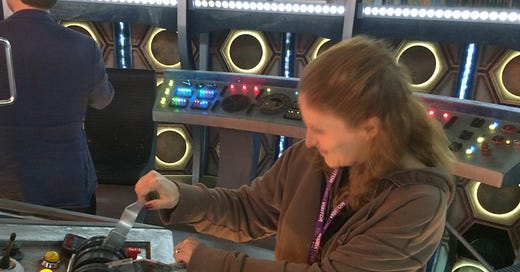



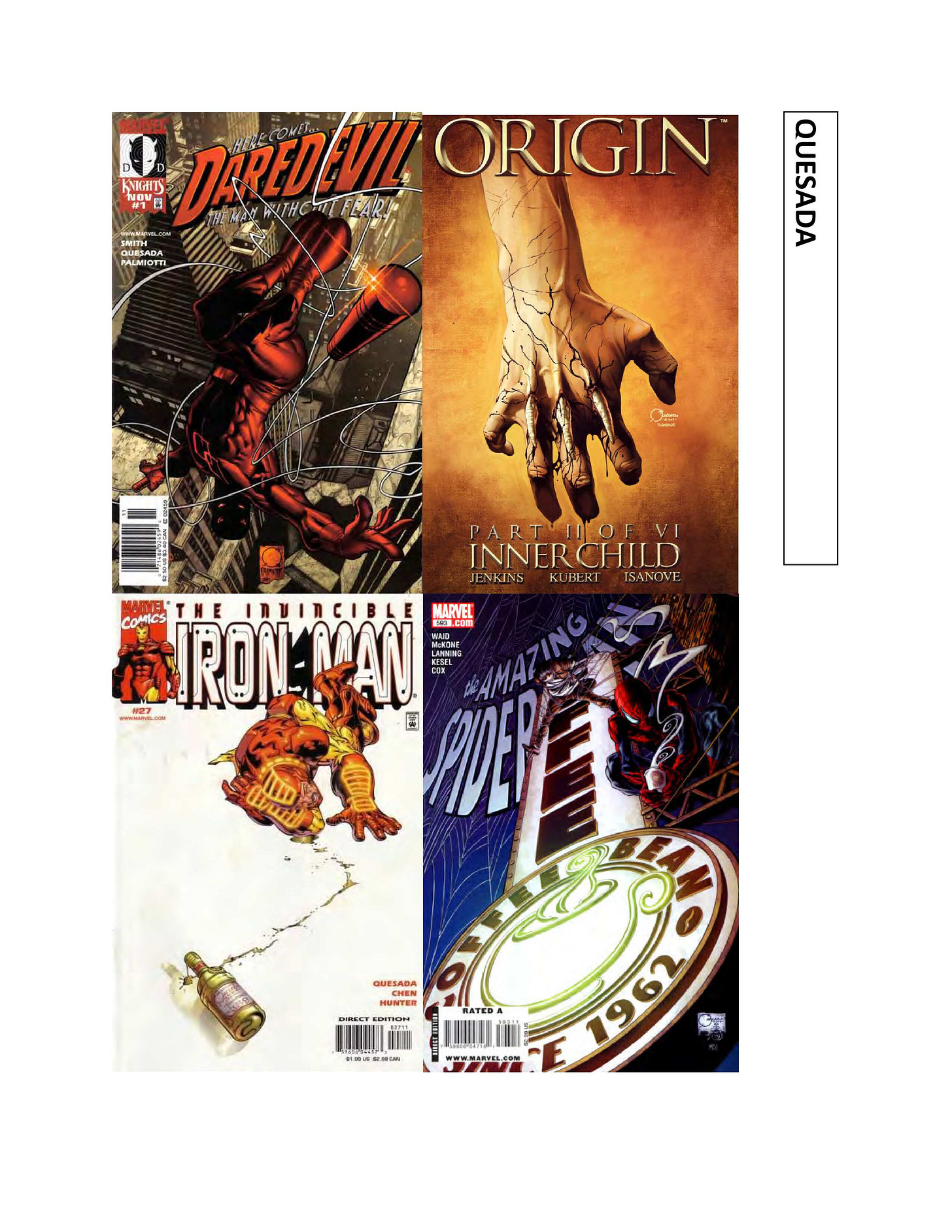
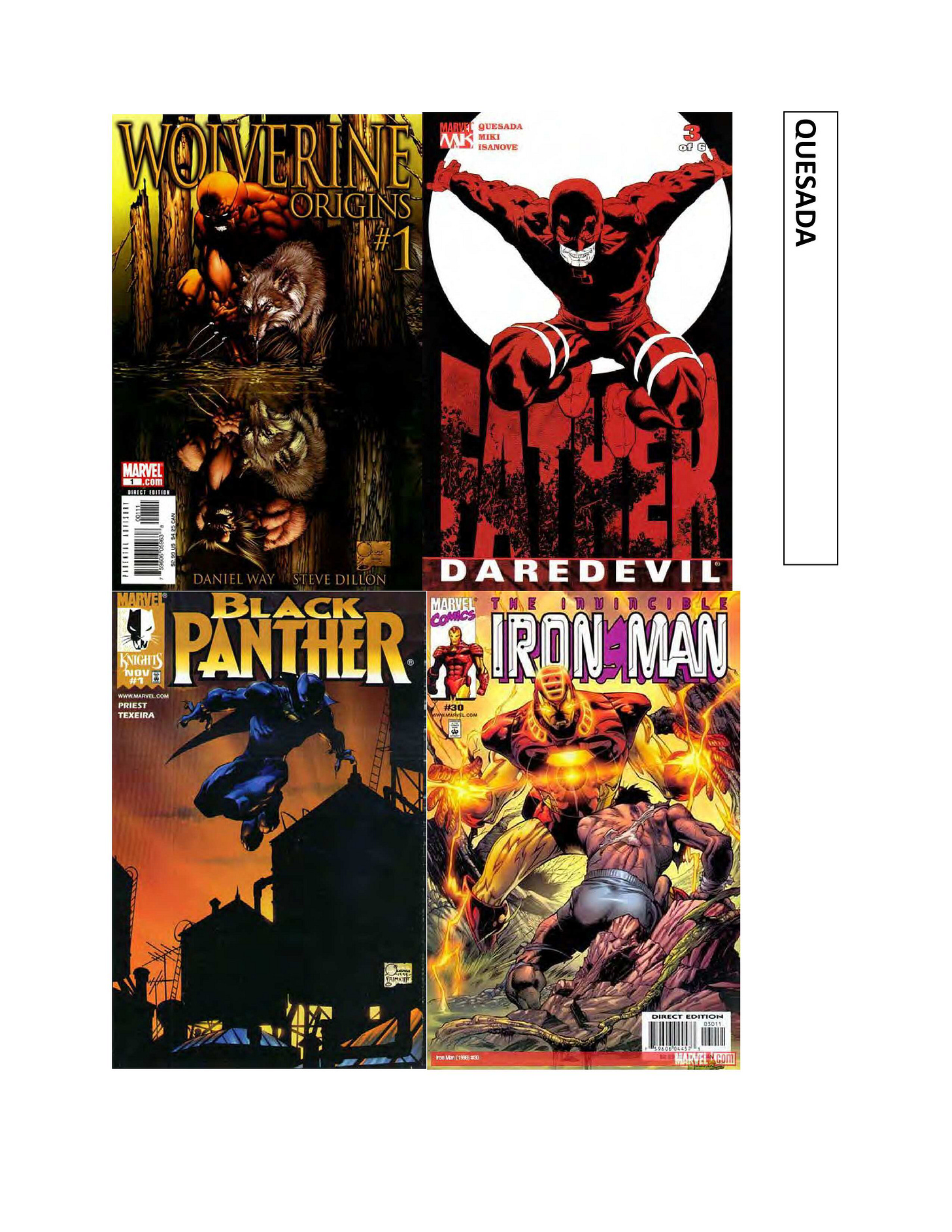


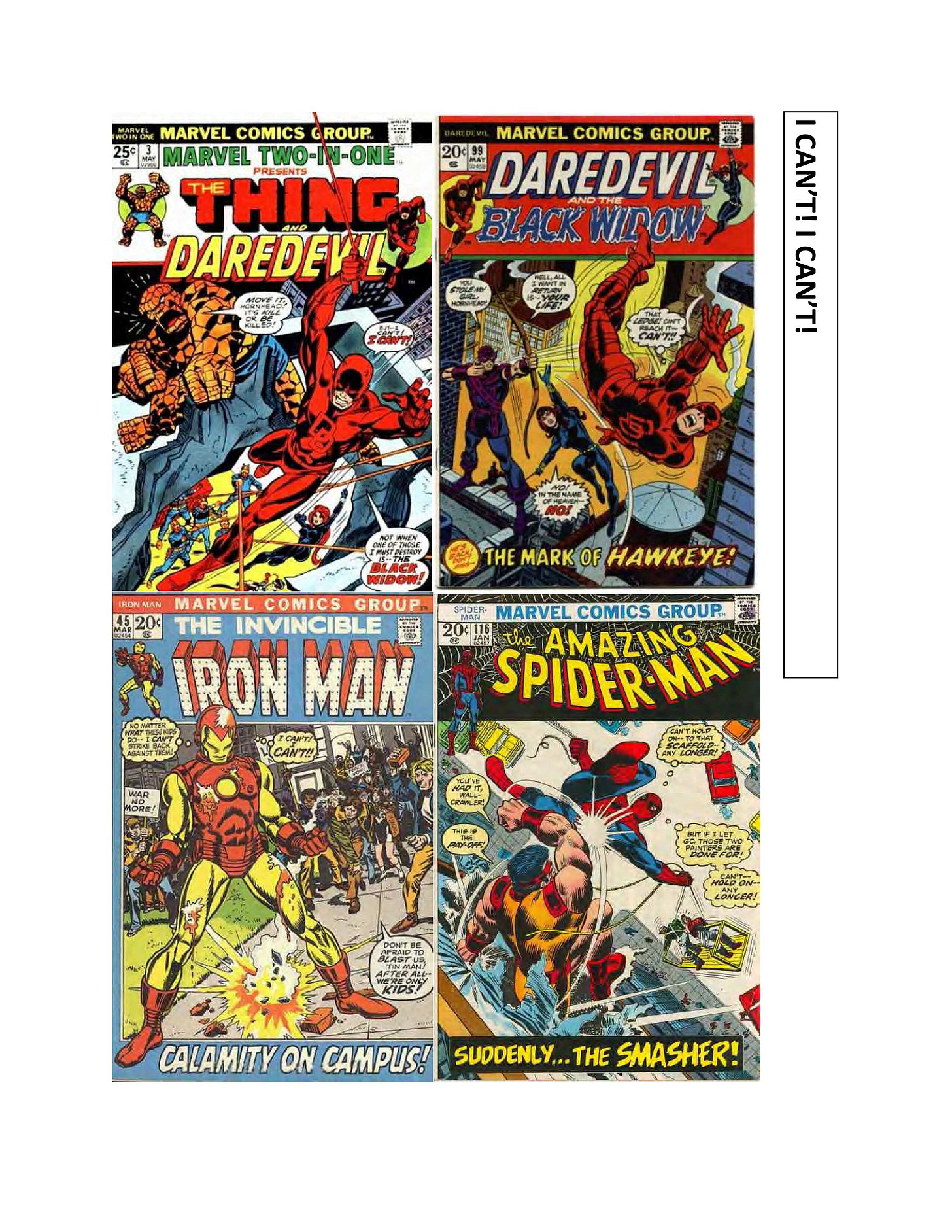
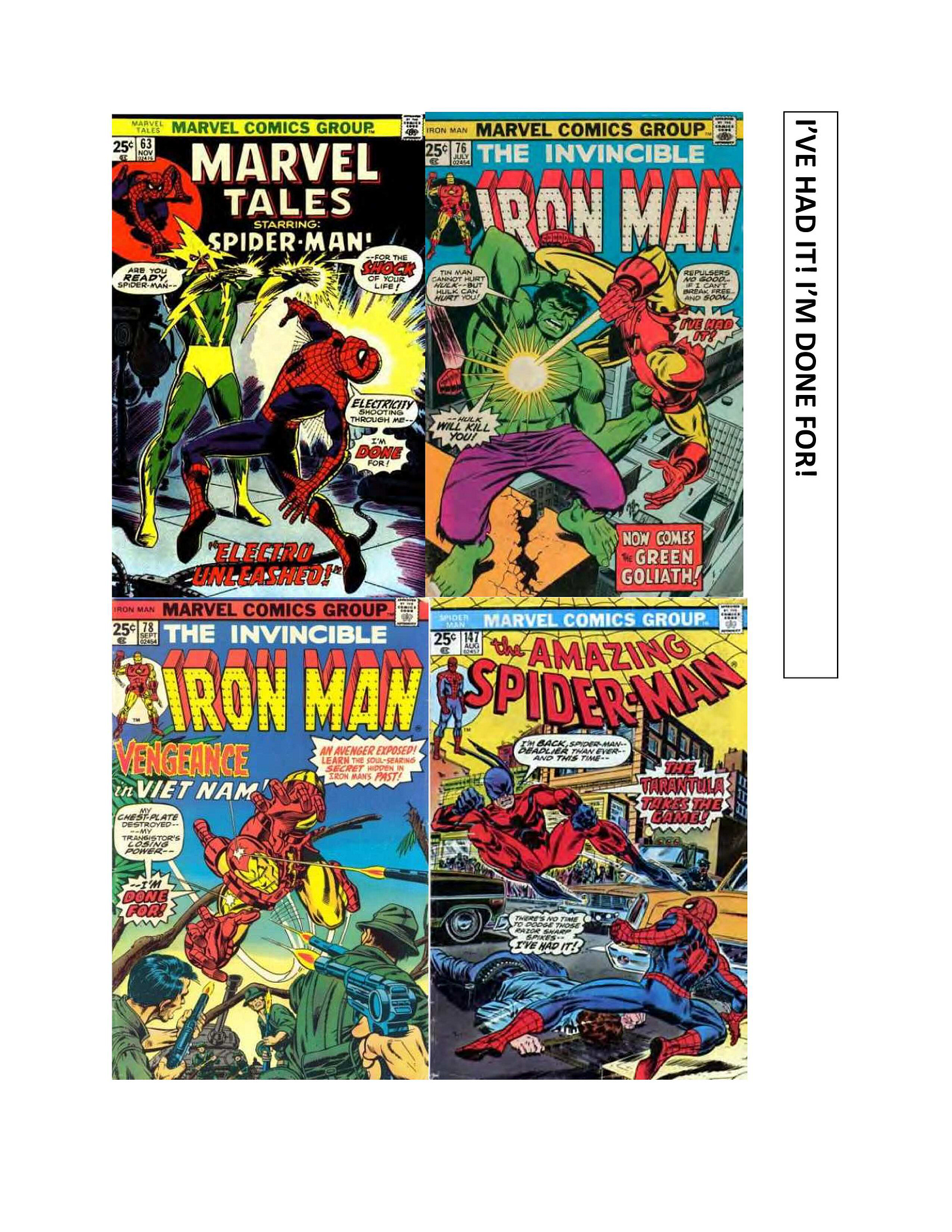
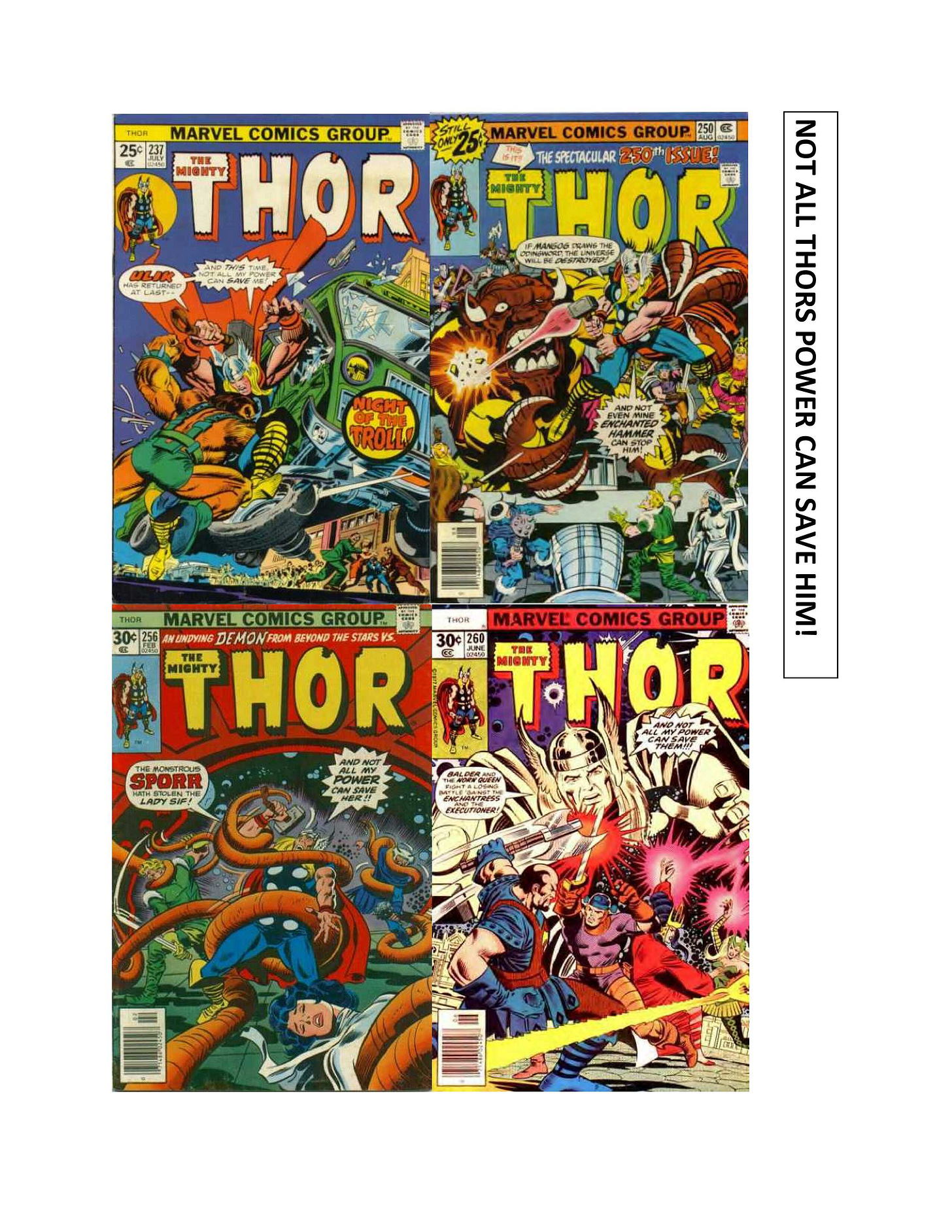
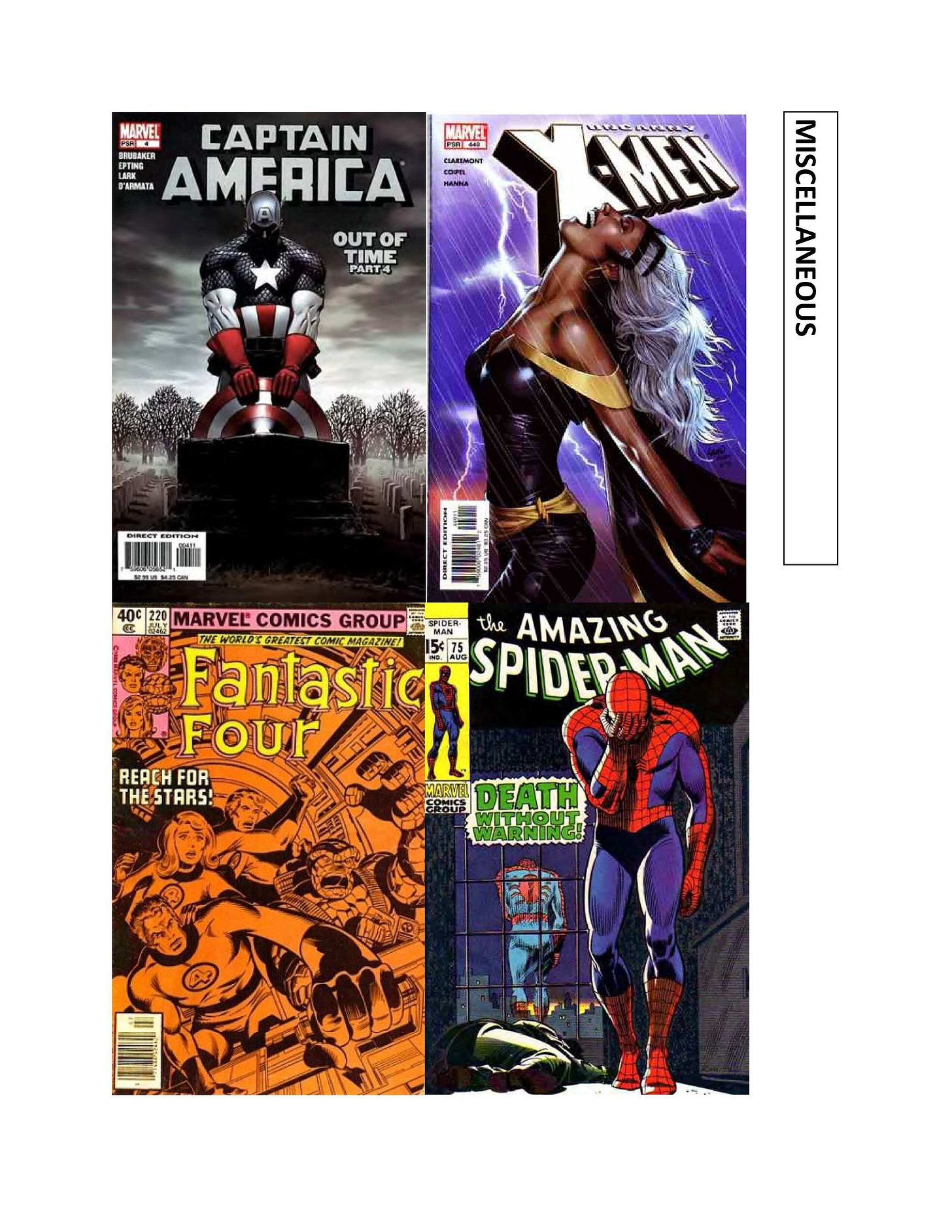

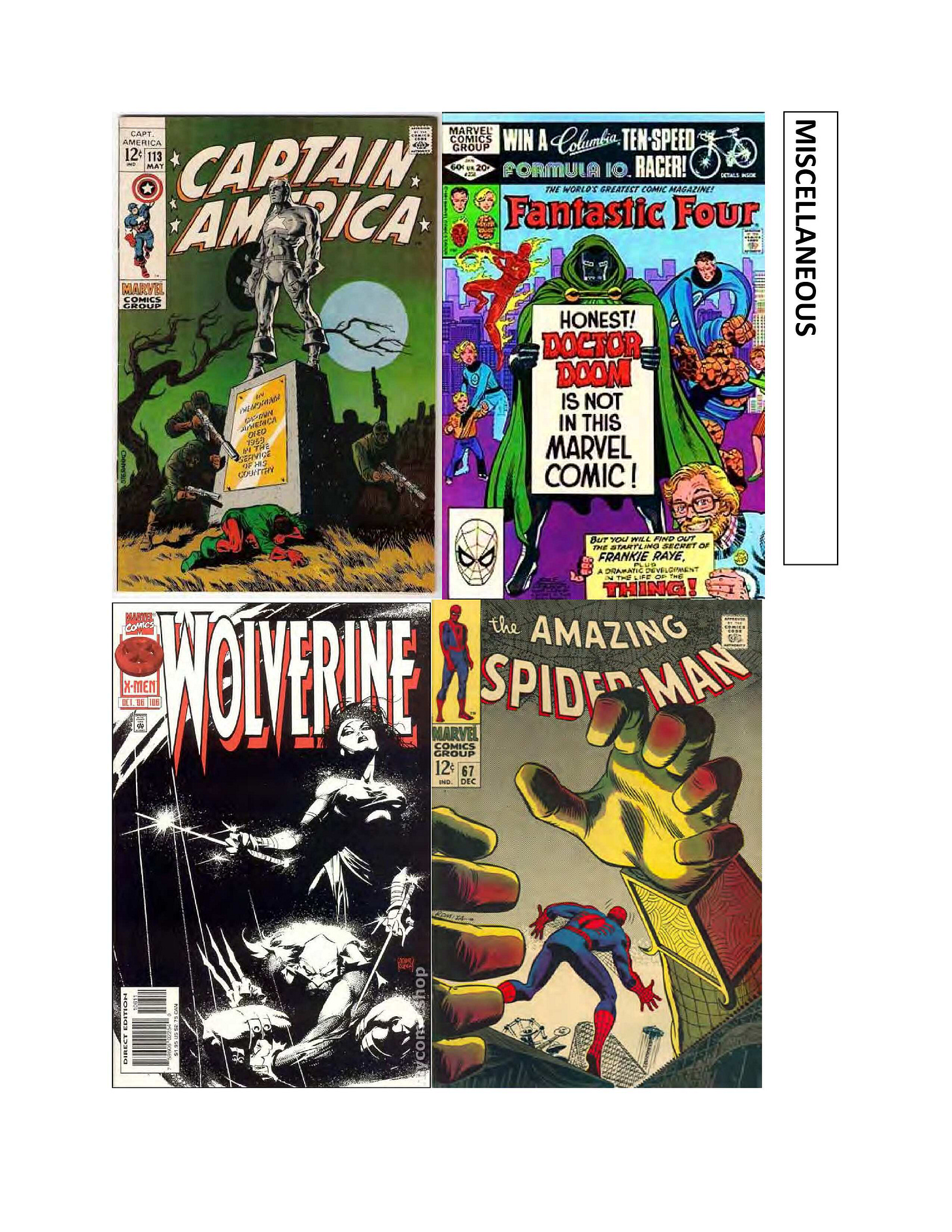
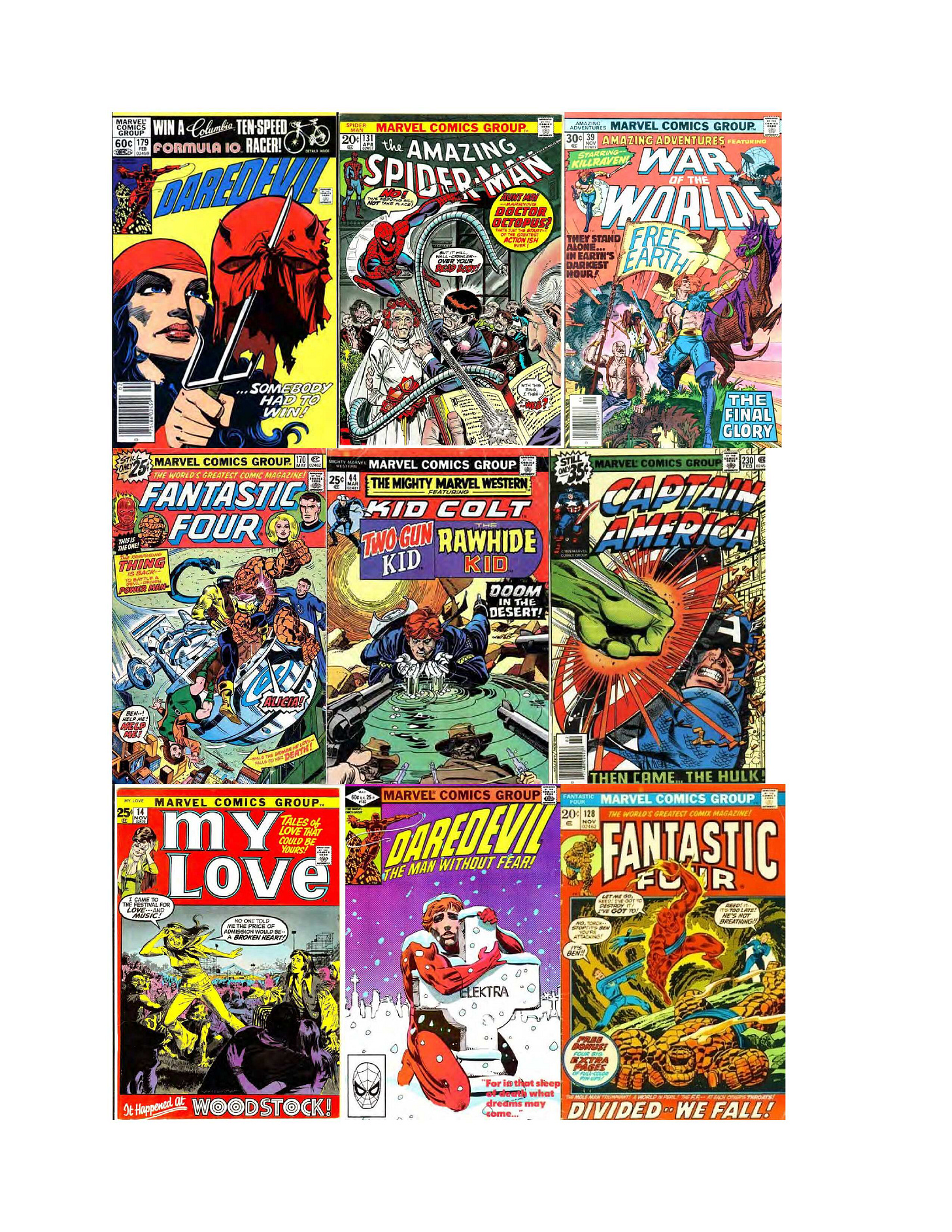
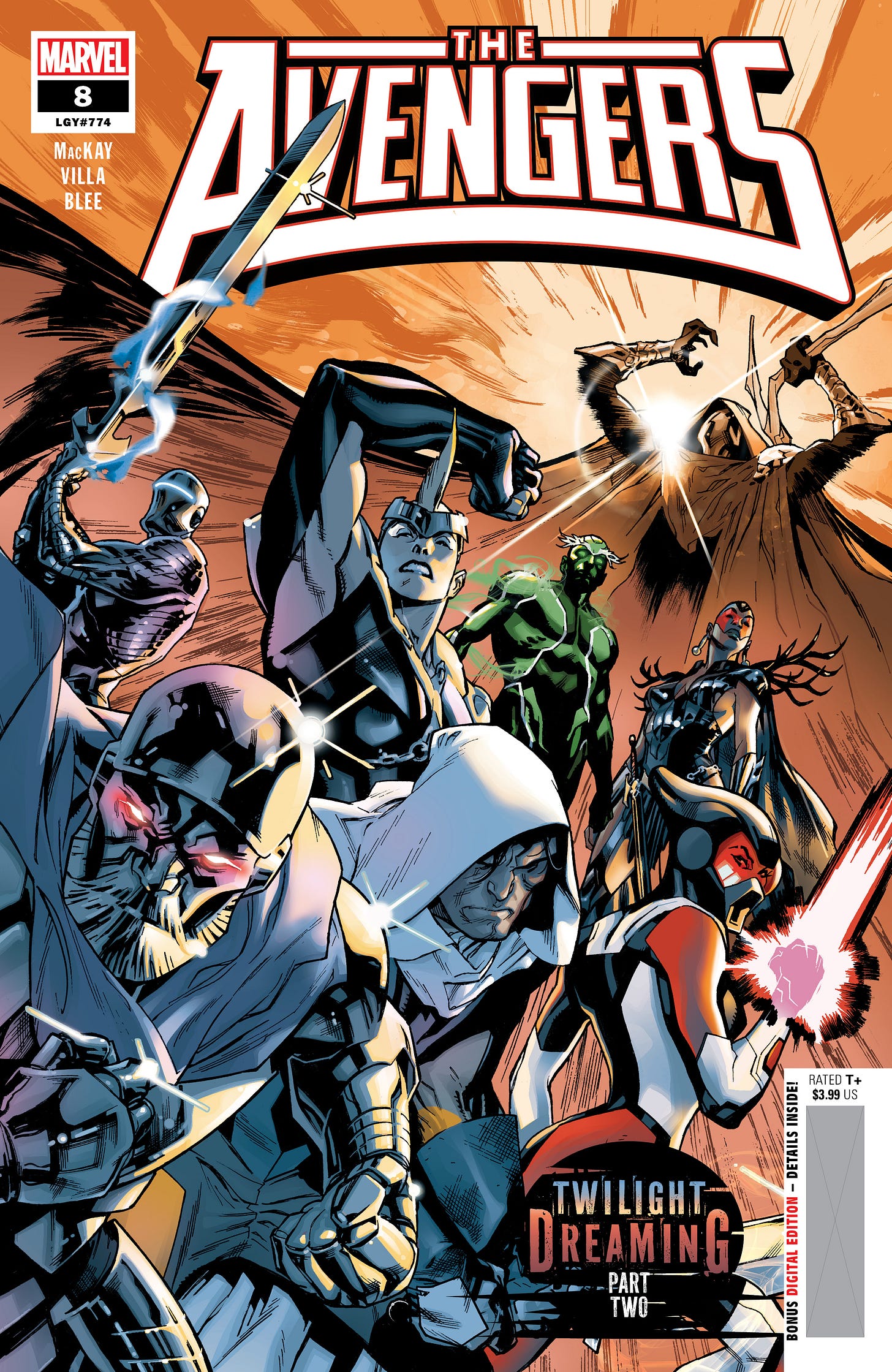
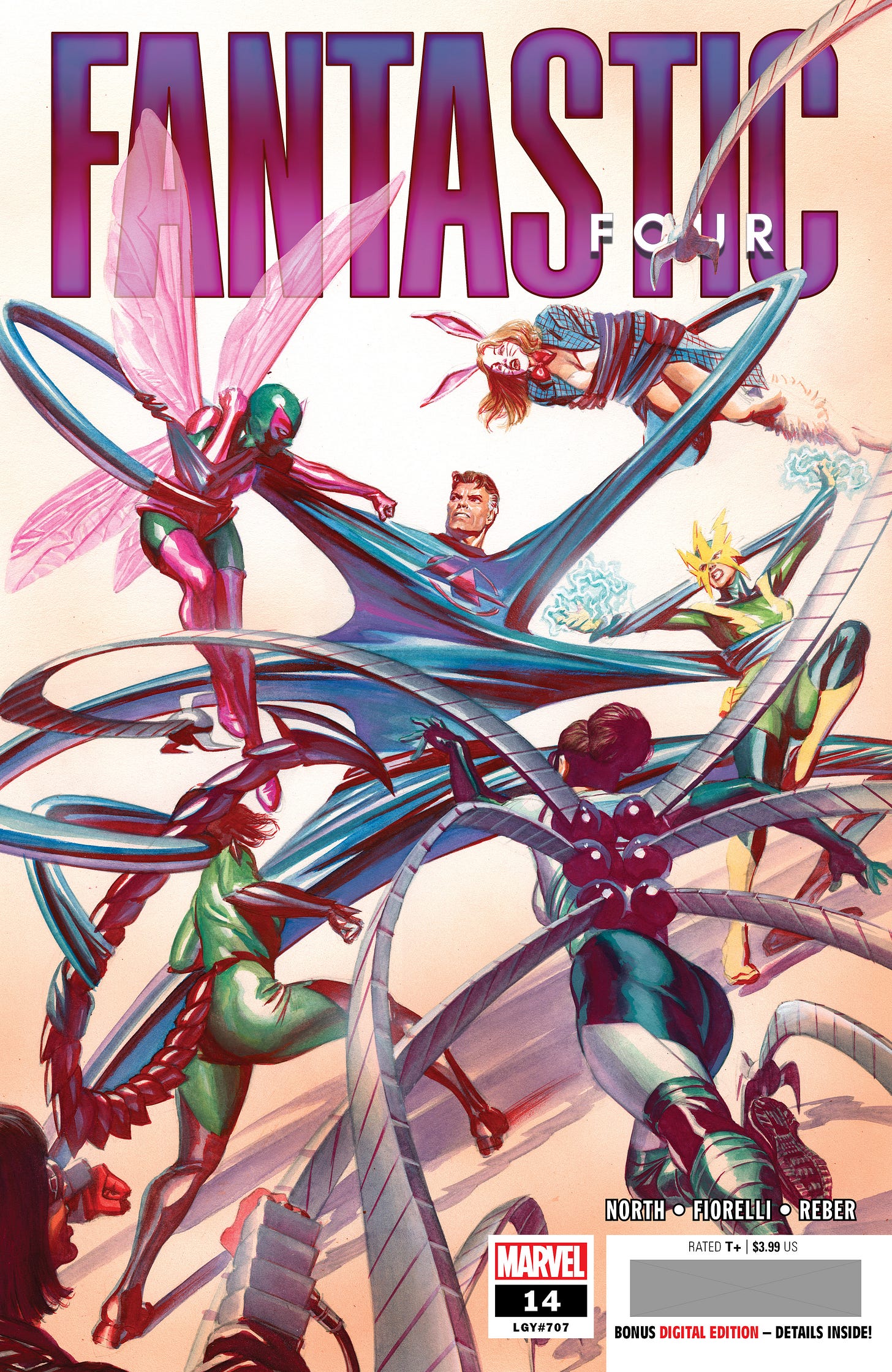

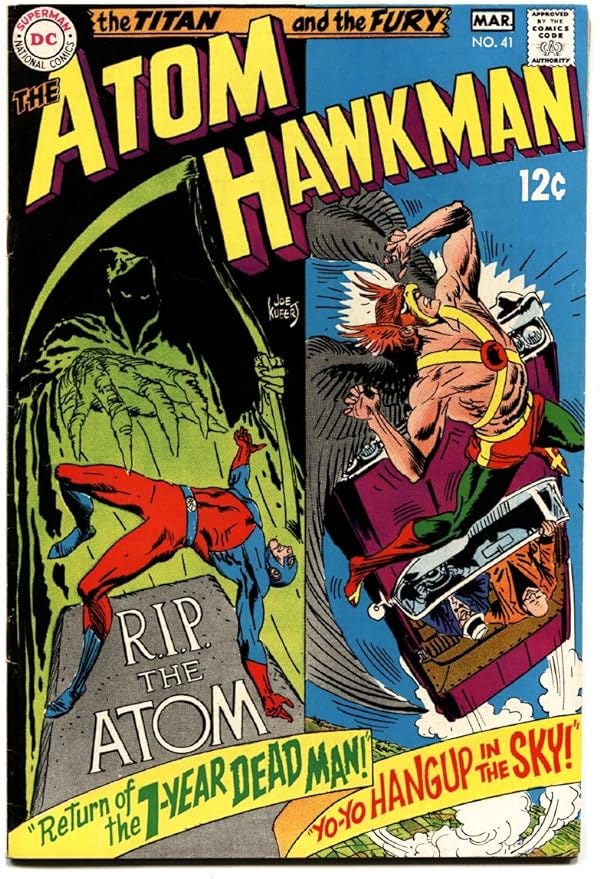

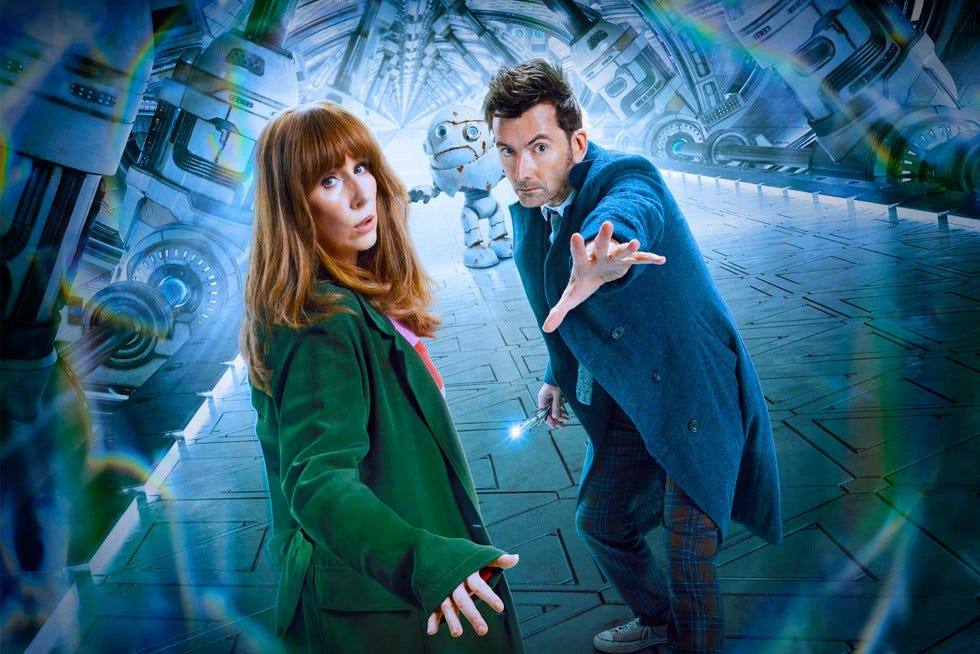
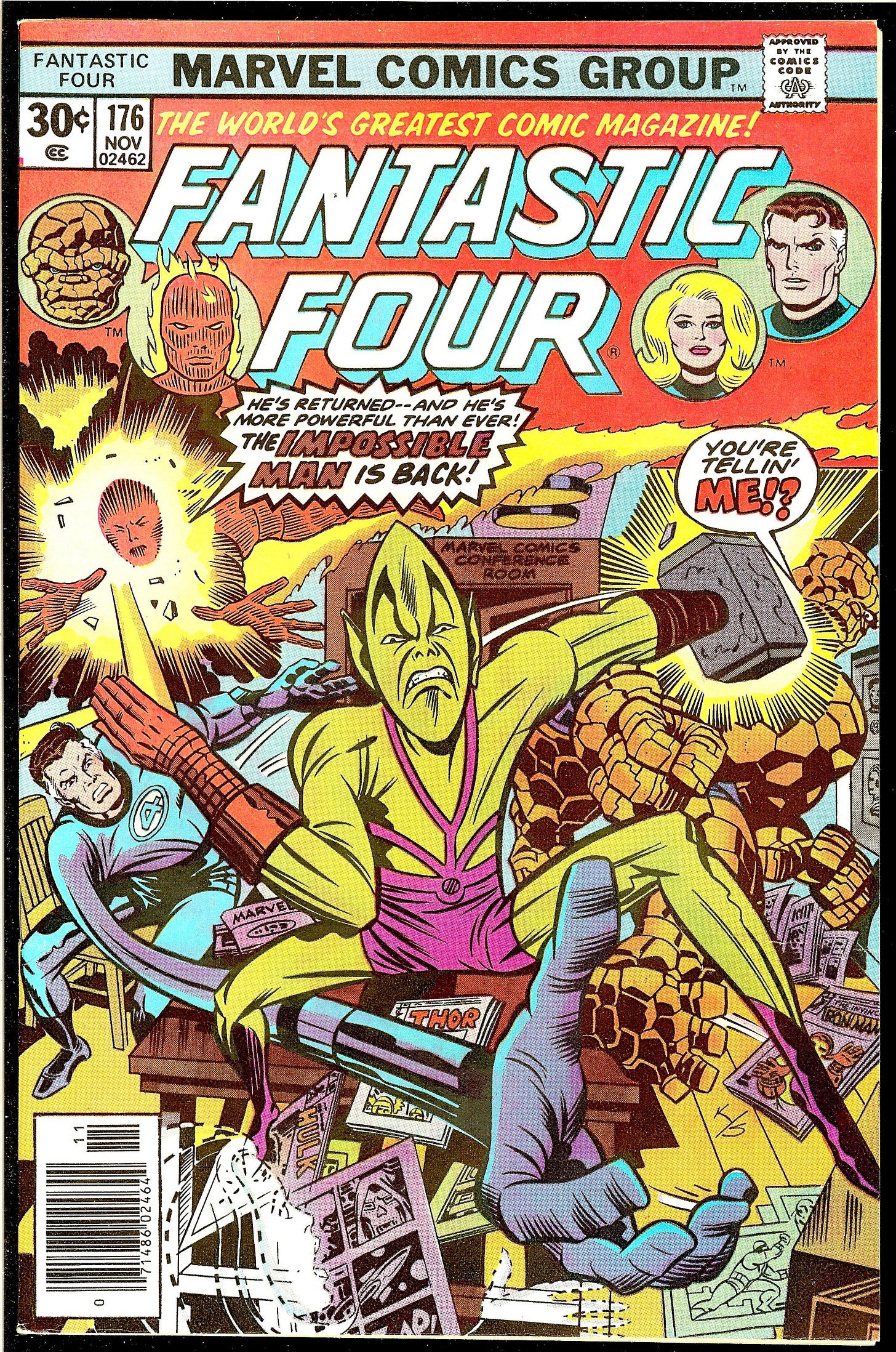
Now really wanna read a book called ADJECTIVE AVENGERS !! ;-)
I have one question Tom. Marvel unsurprisingly has a ton of characters we haven’t seen in a long while. Does anyone peruse the names and lists of characters from time to time, to see if there’s anything worth another go? Or does it not really work like that?
I’d love to see Warlock, Nova and Quasar back again, and here’s an old one, The Brute (aka Reed Richards).